Gang Han
ES-Parkour: Advanced Robot Parkour with Bio-inspired Event Camera and Spiking Neural Network
Mar 13, 2025Abstract:In recent years, quadruped robotics has advanced significantly, particularly in perception and motion control via reinforcement learning, enabling complex motions in challenging environments. Visual sensors like depth cameras enhance stability and robustness but face limitations, such as low operating frequencies relative to joint control and sensitivity to lighting, which hinder outdoor deployment. Additionally, deep neural networks in sensor and control systems increase computational demands. To address these issues, we introduce spiking neural networks (SNNs) and event cameras to perform a challenging quadruped parkour task. Event cameras capture dynamic visual data, while SNNs efficiently process spike sequences, mimicking biological perception. Experimental results demonstrate that this approach significantly outperforms traditional models, achieving excellent parkour performance with just 11.7% of the energy consumption of an artificial neural network (ANN)-based model, yielding an 88.3% energy reduction. By integrating event cameras with SNNs, our work advances robotic reinforcement learning and opens new possibilities for applications in demanding environments.
HumanoidPano: Hybrid Spherical Panoramic-LiDAR Cross-Modal Perception for Humanoid Robots
Mar 13, 2025Abstract:The perceptual system design for humanoid robots poses unique challenges due to inherent structural constraints that cause severe self-occlusion and limited field-of-view (FOV). We present HumanoidPano, a novel hybrid cross-modal perception framework that synergistically integrates panoramic vision and LiDAR sensing to overcome these limitations. Unlike conventional robot perception systems that rely on monocular cameras or standard multi-sensor configurations, our method establishes geometrically-aware modality alignment through a spherical vision transformer, enabling seamless fusion of 360 visual context with LiDAR's precise depth measurements. First, Spherical Geometry-aware Constraints (SGC) leverage panoramic camera ray properties to guide distortion-regularized sampling offsets for geometric alignment. Second, Spatial Deformable Attention (SDA) aggregates hierarchical 3D features via spherical offsets, enabling efficient 360{\deg}-to-BEV fusion with geometrically complete object representations. Third, Panoramic Augmentation (AUG) combines cross-view transformations and semantic alignment to enhance BEV-panoramic feature consistency during data augmentation. Extensive evaluations demonstrate state-of-the-art performance on the 360BEV-Matterport benchmark. Real-world deployment on humanoid platforms validates the system's capability to generate accurate BEV segmentation maps through panoramic-LiDAR co-perception, directly enabling downstream navigation tasks in complex environments. Our work establishes a new paradigm for embodied perception in humanoid robotics.
Trinity: A Modular Humanoid Robot AI System
Mar 11, 2025Abstract:In recent years, research on humanoid robots has garnered increasing attention. With breakthroughs in various types of artificial intelligence algorithms, embodied intelligence, exemplified by humanoid robots, has been highly anticipated. The advancements in reinforcement learning (RL) algorithms have significantly improved the motion control and generalization capabilities of humanoid robots. Simultaneously, the groundbreaking progress in large language models (LLM) and visual language models (VLM) has brought more possibilities and imagination to humanoid robots. LLM enables humanoid robots to understand complex tasks from language instructions and perform long-term task planning, while VLM greatly enhances the robots' understanding and interaction with their environment. This paper introduces \textcolor{magenta}{Trinity}, a novel AI system for humanoid robots that integrates RL, LLM, and VLM. By combining these technologies, Trinity enables efficient control of humanoid robots in complex environments. This innovative approach not only enhances the capabilities but also opens new avenues for future research and applications of humanoid robotics.
Distillation-PPO: A Novel Two-Stage Reinforcement Learning Framework for Humanoid Robot Perceptive Locomotion
Mar 11, 2025Abstract:In recent years, humanoid robots have garnered significant attention from both academia and industry due to their high adaptability to environments and human-like characteristics. With the rapid advancement of reinforcement learning, substantial progress has been made in the walking control of humanoid robots. However, existing methods still face challenges when dealing with complex environments and irregular terrains. In the field of perceptive locomotion, existing approaches are generally divided into two-stage methods and end-to-end methods. Two-stage methods first train a teacher policy in a simulated environment and then use distillation techniques, such as DAgger, to transfer the privileged information learned as latent features or actions to the student policy. End-to-end methods, on the other hand, forgo the learning of privileged information and directly learn policies from a partially observable Markov decision process (POMDP) through reinforcement learning. However, due to the lack of supervision from a teacher policy, end-to-end methods often face difficulties in training and exhibit unstable performance in real-world applications. This paper proposes an innovative two-stage perceptive locomotion framework that combines the advantages of teacher policies learned in a fully observable Markov decision process (MDP) to regularize and supervise the student policy. At the same time, it leverages the characteristics of reinforcement learning to ensure that the student policy can continue to learn in a POMDP, thereby enhancing the model's upper bound. Our experimental results demonstrate that our two-stage training framework achieves higher training efficiency and stability in simulated environments, while also exhibiting better robustness and generalization capabilities in real-world applications.
LiPS: Large-Scale Humanoid Robot Reinforcement Learning with Parallel-Series Structures
Mar 11, 2025Abstract:In recent years, research on humanoid robots has garnered significant attention, particularly in reinforcement learning based control algorithms, which have achieved major breakthroughs. Compared to traditional model-based control algorithms, reinforcement learning based algorithms demonstrate substantial advantages in handling complex tasks. Leveraging the large-scale parallel computing capabilities of GPUs, contemporary humanoid robots can undergo extensive parallel training in simulated environments. A physical simulation platform capable of large-scale parallel training is crucial for the development of humanoid robots. As one of the most complex robot forms, humanoid robots typically possess intricate mechanical structures, encompassing numerous series and parallel mechanisms. However, many reinforcement learning based humanoid robot control algorithms currently employ open-loop topologies during training, deferring the conversion to series-parallel structures until the sim2real phase. This approach is primarily due to the limitations of physics engines, as current GPU-based physics engines often only support open-loop topologies or have limited capabilities in simulating multi-rigid-body closed-loop topologies. For enabling reinforcement learning-based humanoid robot control algorithms to train in large-scale parallel environments, we propose a novel training method LiPS. By incorporating multi-rigid-body dynamics modeling in the simulation environment, we significantly reduce the sim2real gap and the difficulty of converting to parallel structures during model deployment, thereby robustly supporting large-scale reinforcement learning for humanoid robots.
E2H: A Two-Stage Non-Invasive Neural Signal Driven Humanoid Robotic Whole-Body Control Framework
Oct 03, 2024
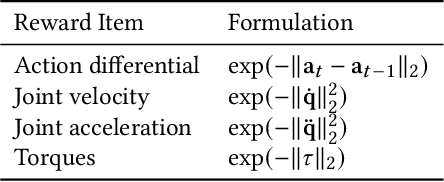
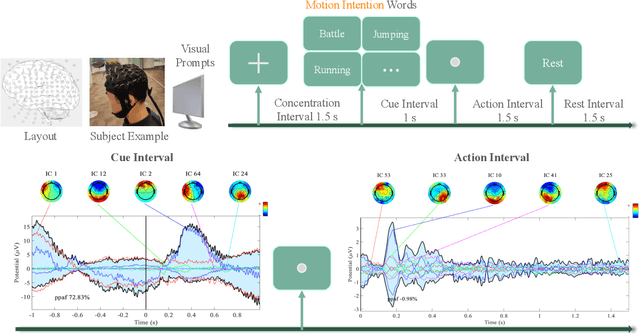
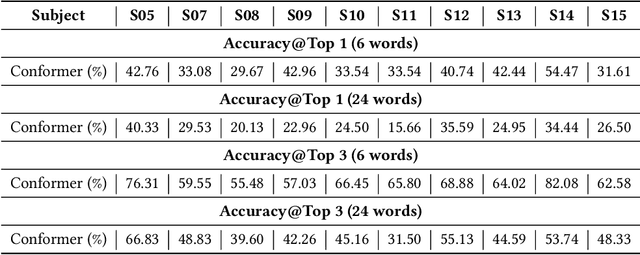
Abstract:Recent advancements in humanoid robotics, including the integration of hierarchical reinforcement learning-based control and the utilization of LLM planning, have significantly enhanced the ability of robots to perform complex tasks. In contrast to the highly developed humanoid robots, the human factors involved remain relatively unexplored. Directly controlling humanoid robots with the brain has already appeared in many science fiction novels, such as Pacific Rim and Gundam. In this work, we present E2H (EEG-to-Humanoid), an innovative framework that pioneers the control of humanoid robots using high-frequency non-invasive neural signals. As the none-invasive signal quality remains low in decoding precise spatial trajectory, we decompose the E2H framework in an innovative two-stage formation: 1) decoding neural signals (EEG) into semantic motion keywords, 2) utilizing LLM facilitated motion generation with a precise motion imitation control policy to realize humanoid robotics control. The method of directly driving robots with brainwave commands offers a novel approach to human-machine collaboration, especially in situations where verbal commands are impractical, such as in cases of speech impairments, space exploration, or underwater exploration, unlocking significant potential. E2H offers an exciting glimpse into the future, holding immense potential for human-computer interaction.
Mamba Policy: Towards Efficient 3D Diffusion Policy with Hybrid Selective State Models
Sep 11, 2024



Abstract:Diffusion models have been widely employed in the field of 3D manipulation due to their efficient capability to learn distributions, allowing for precise prediction of action trajectories. However, diffusion models typically rely on large parameter UNet backbones as policy networks, which can be challenging to deploy on resource-constrained devices. Recently, the Mamba model has emerged as a promising solution for efficient modeling, offering low computational complexity and strong performance in sequence modeling. In this work, we propose the Mamba Policy, a lighter but stronger policy that reduces the parameter count by over 80% compared to the original policy network while achieving superior performance. Specifically, we introduce the XMamba Block, which effectively integrates input information with conditional features and leverages a combination of Mamba and Attention mechanisms for deep feature extraction. Extensive experiments demonstrate that the Mamba Policy excels on the Adroit, Dexart, and MetaWorld datasets, requiring significantly fewer computational resources. Additionally, we highlight the Mamba Policy's enhanced robustness in long-horizon scenarios compared to baseline methods and explore the performance of various Mamba variants within the Mamba Policy framework. Our project page is in https://andycao1125.github.io/mamba_policy/.
Mamba as Decision Maker: Exploring Multi-scale Sequence Modeling in Offline Reinforcement Learning
Jun 04, 2024
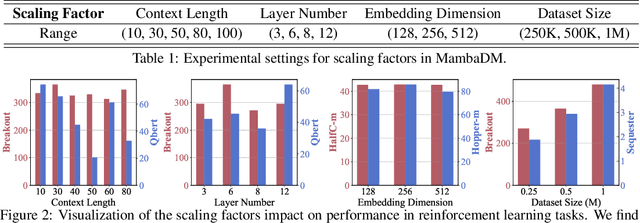

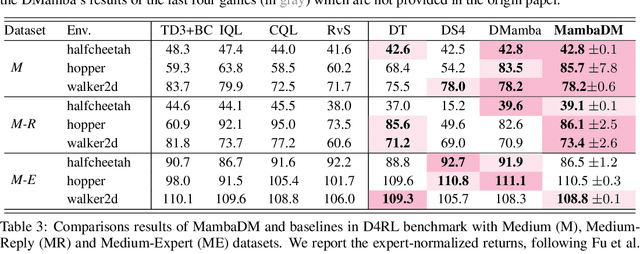
Abstract:Sequential modeling has demonstrated remarkable capabilities in offline reinforcement learning (RL), with Decision Transformer (DT) being one of the most notable representatives, achieving significant success. However, RL trajectories possess unique properties to be distinguished from the conventional sequence (e.g., text or audio): (1) local correlation, where the next states in RL are theoretically determined solely by current states and actions based on the Markov Decision Process (MDP), and (2) global correlation, where each step's features are related to long-term historical information due to the time-continuous nature of trajectories. In this paper, we propose a novel action sequence predictor, named Mamba Decision Maker (MambaDM), where Mamba is expected to be a promising alternative for sequence modeling paradigms, owing to its efficient modeling of multi-scale dependencies. In particular, we introduce a novel mixer module that proficiently extracts and integrates both global and local features of the input sequence, effectively capturing interrelationships in RL datasets. Extensive experiments demonstrate that MambaDM achieves state-of-the-art performance in Atari and OpenAI Gym datasets. Furthermore, we empirically investigate the scaling laws of MambaDM, finding that increasing model size does not bring performance improvement, but scaling the dataset amount by 2x for MambaDM can obtain up to 33.7% score improvement on Atari dataset. This paper delves into the sequence modeling capabilities of MambaDM in the RL domain, paving the way for future advancements in robust and efficient decision-making systems. Our code will be available at https://github.com/AndyCao1125/MambaDM.
Recursive Hierarchical Projection for Whole-Body Control with Task Priority Transition
Sep 22, 2021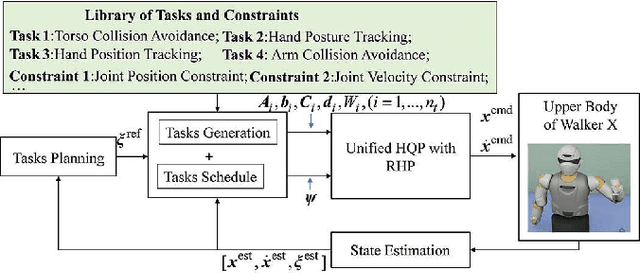

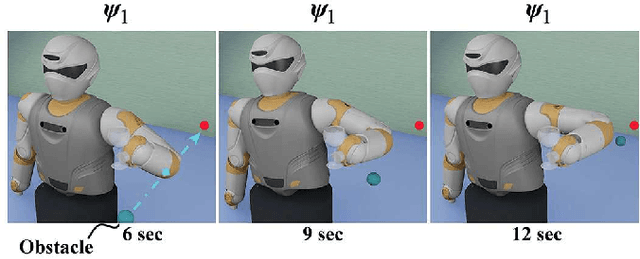
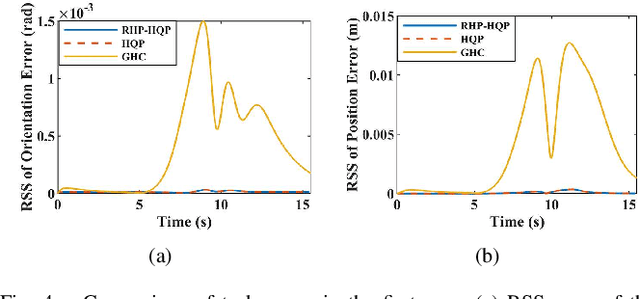
Abstract:Redundant robots are desired to execute multitasks with different priorities simultaneously. The task priorities are necessary to be transitioned for complex task scheduling of whole-body control (WBC). Many methods focused on guaranteeing the control continuity during task priority transition, however either increased the computation consumption or sacrificed the accuracy of tasks inevitably. This work formulates the WBC problem with task priority transition as an Hierarchical Quadratic Programming (HQP) with Recursive Hierarchical Projection (RHP) matrices. The tasks of each level are solved recursively through HQP. We propose the RHP matrix to form the continuously changing projection of each level so that the task priority transition is achieved without increasing computation consumption. Additionally, the recursive approach solves the WBC problem without losing the accuracy of tasks. We verify the effectiveness of this scheme by the comparative simulations of the reactive collision avoidance through multi-tasks priority transitions.
Mixed Control for Whole-Body Compliance of a Humanoid Robot
Sep 16, 2021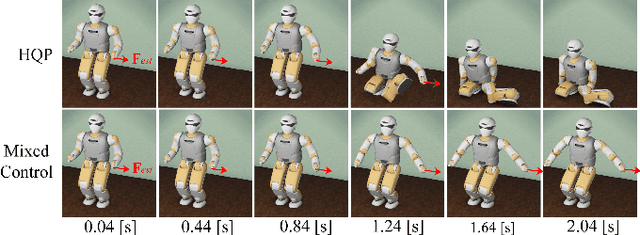
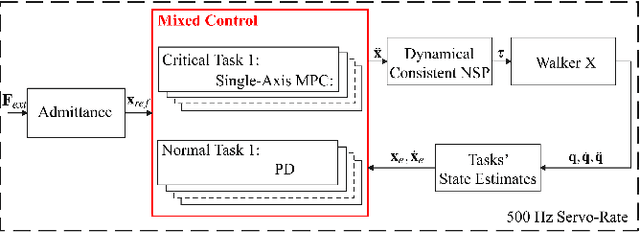
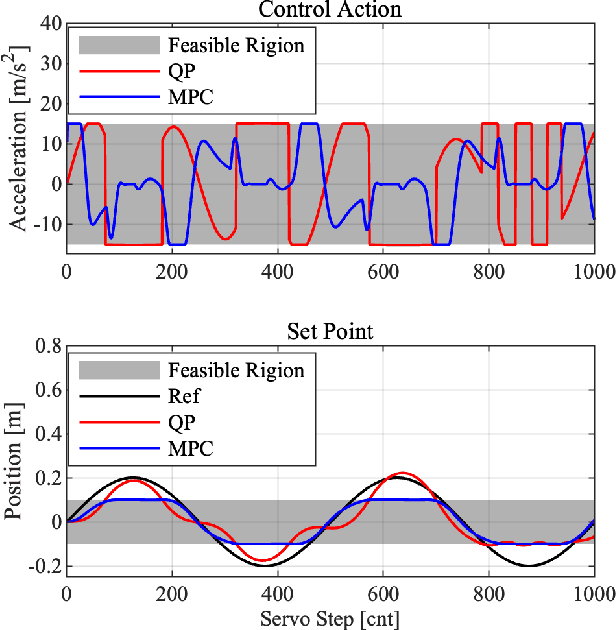
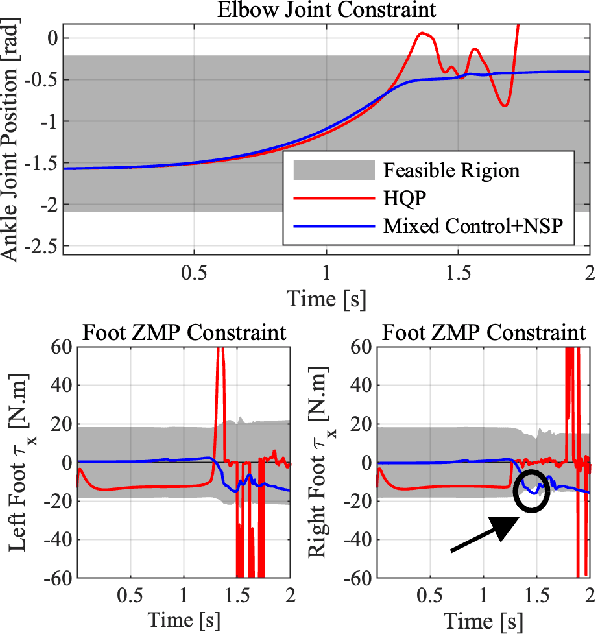
Abstract:The hierarchical quadratic programming (HQP) is commonly applied to consider strict hierarchies of multi-tasks and robot's physical inequality constraints during whole-body compliance. However, for the one-step HQP, the solution can oscillate when it is close to the boundary of constraints. It is because the abrupt hit of the bounds gives rise to unrealisable jerks and even infeasible solutions. This paper proposes the mixed control, which blends the single-axis model predictive control (MPC) and proportional derivate (PD) control for the whole-body compliance to overcome these deficiencies. The MPC predicts the distances between the bounds and the control target of the critical tasks, and it provides smooth and feasible solutions by prediction and optimisation in advance. However, applying MPC will inevitably increase the computation time. Therefore, to achieve a 500 Hz servo rate, the PD controllers still regulate other tasks to save computation resources. Also, we use a more efficient null space projection (NSP) whole-body controller instead of the HQP and distribute the single-axis MPCs into four CPU cores for parallel computation. Finally, we validate the desired capabilities of the proposed strategy via Simulations and the experiment on the humanoid robot Walker X.
 Add to Chrome
Add to Chrome Add to Firefox
Add to Firefox Add to Edge
Add to Edge